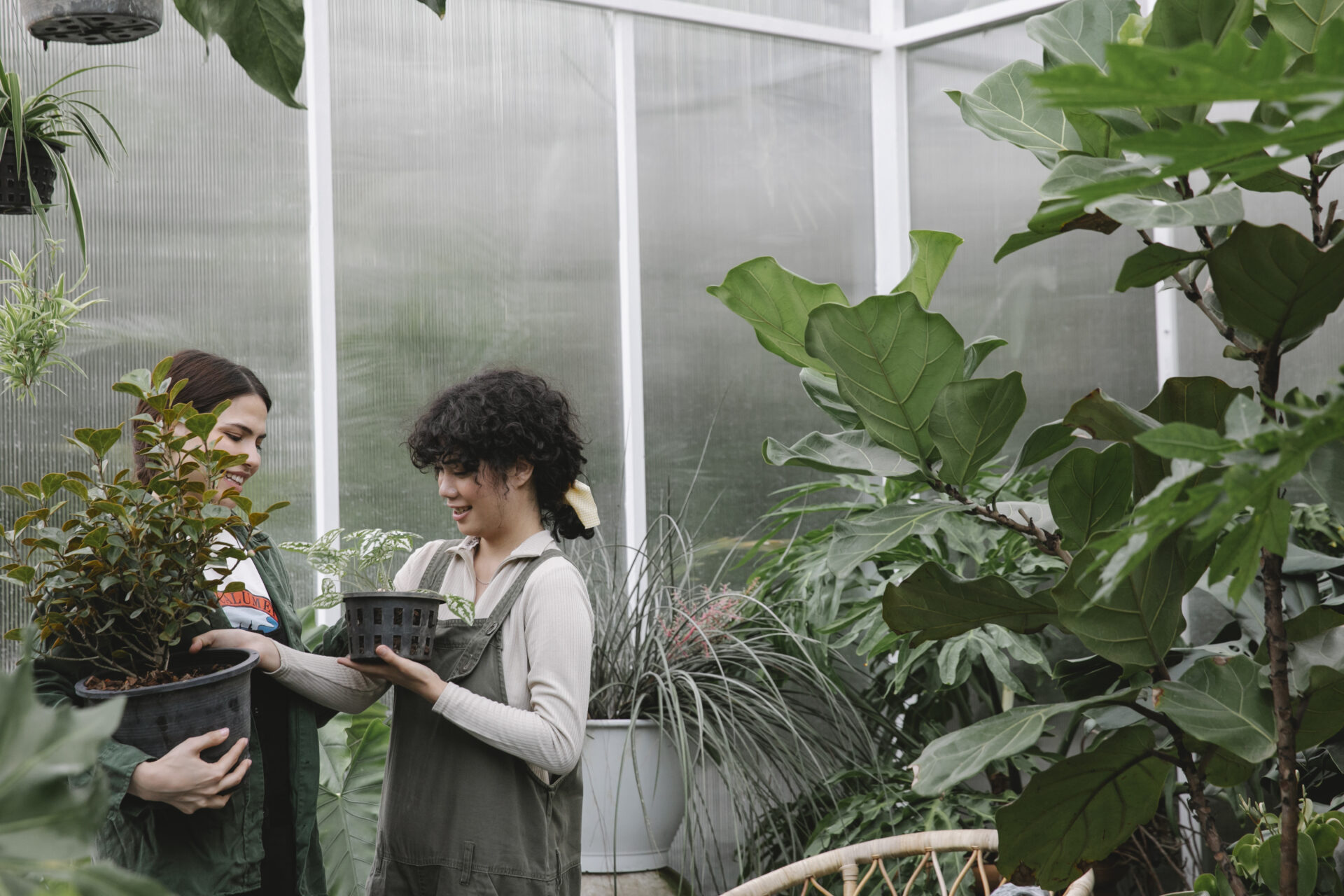Indoor vertical gardening has gained immense popularity recently, offering a space-efficient and innovative method for growing plants in urban environments. Proper fertilization is an essential aspect that cannot be overlooked to ensure the health and productivity of your vertical garden. In this article, we delve into the intricacies of fertilizing your indoor vertical garden, discussing the types of fertilizers available, their application methods, and the factors that influence optimal fertilization.
By understanding these core concepts, you will be well-equipped to provide your plants with the essential nutrients they need to flourish in a vertical setup. So, let’s embark on this journey towards a thriving and bountiful indoor vertical garden.
Organic vs Synthetic Fertilizers for Vertical Gardens
Gardeners often choose between organic and synthetic fertilizers. Each type of fertilizer has unique advantages and disadvantages, making it essential to understand these differences before selecting the best option for your indoor vertical garden. In this section, we will explore organic and synthetic fertilizers’ characteristics, benefits, and drawbacks, enabling you to make an informed decision about nurturing your plants in a vertical setup.
The Nature of Organic Fertilizers
Organic fertilizers are derived from natural sources such as animal manure, compost, seaweed, and bone meal. These fertilizers are typically slow-release, providing nutrients to the plants over an extended period. Organic fertilizers not only supply essential nutrients to your plants but also contribute to the overall health of the growing medium by improving soil structure, increasing water retention capacity, and supporting beneficial microorganisms.
Pros and Cons of Organic Fertilizers
One of the primary advantages of organic fertilizers is their low risk of causing nutrient burn or over-fertilization, as they release nutrients gradually. Organic fertilizers also help to create a sustainable garden ecosystem, promoting healthy plant growth and reducing the risk of diseases and pest infestations.
On the downside, organic fertilizers can be bulkier and more cumbersome in a vertical garden setup. They may also be more expensive than synthetic options and odor unpleasant. Furthermore, the nutrient content of organic fertilizers varies, making it difficult to gauge the precise amounts of nutrients being provided to your plants accurately.
Synthetic Fertilizers and their Features
Synthetic fertilizers, also known as chemical or inorganic fertilizers, are manufactured using mineral salts or other chemical processes. These fertilizers are available in various forms, such as granules, liquids, or slow-release capsules. Synthetic fertilizers contain specific ratios of nutrients, allowing gardeners to tailor their applications to the needs of their plants.
Advantages and Disadvantages of Synthetic Fertilizers
The primary benefit of synthetic fertilizers lies in their precise nutrient content and the ability to provide plants with the exact nutrients they require. They are also more cost-effective and easier to apply in a vertical garden than their organic counterparts.
However, synthetic fertilizers are not without their drawbacks. Overuse or incorrect application can lead to nutrient burn, damaging or even killing your plants. Additionally, synthetic fertilizers do not contribute to the overall health of the growing medium, and their regular use may lead to the depletion of organic matter and beneficial microorganisms in the soil.
Making the Right Choice for Your Indoor Vertical Garden
Ultimately, the choice between organic and synthetic fertilizers depends on your gardening preferences, budget, and the specific needs of your plants. Consider experimenting with both fertilizers to determine which works best for your indoor vertical garden. Remember that a thriving vertical garden requires a delicate balance of nutrients, light, and water. For more information on designing and maintaining a flourishing indoor vertical garden, refer to our comprehensive guide on How to Create a Living Wall with an Indoor Vertical Garden.
Monitoring and Adjusting Fertilization for Plant Health
Proper fertilization of your indoor vertical garden involves more than selecting the right type and amount of fertilizer. It also requires continuous monitoring and adjustment to ensure optimal plant health and growth. This subsection delves into various factors and techniques for monitoring and adjusting fertilization in your indoor vertical garden. We’ll also explore the importance of understanding plant nutrient deficiencies and how to address them effectively.
Assessing Your Plants’ Nutrient Needs
Different plants have varying nutrient requirements, and understanding these needs is crucial for adequate fertilization. Research the specific nutrient needs of the plants in your vertical garden to determine the appropriate type and amount of fertilizer. Factors such as plant species, growth stage, and environmental conditions can all influence nutrient requirements. Regularly observe your plants for signs of nutrient deficiencies or excesses, and adjust your fertilization practices accordingly.
Monitoring Plant Growth and Health
Regularly checking your plants’ growth and health is essential for determining the effectiveness of your fertilization regimen. Symptoms such as stunted growth, yellowing leaves, or weak stems can indicate nutrient imbalances. Keep a close eye on your plants and document any changes in appearance or growth patterns to help identify potential nutrient deficiencies or excesses.
Conducting a Soil or Growing Medium Test
Periodic testing of your soil or growing medium can provide valuable insights into the nutrient content and pH levels, allowing you to adjust your fertilization practices. Soil test kits are widely available and can measure nutrient levels and pH in your growing medium. Based on the test results, you can tailor your fertilization strategy to provide your plants with the optimal balance of nutrients.
Adjusting Fertilization Frequency and Amount
The frequency and amount of fertilizer application can significantly impact plant health in your indoor vertical garden. Over-fertilization can lead to nutrient burn and other plant health issues, while under-fertilization can result in nutrient deficiencies and stunted growth. Monitor your plants and adjust the frequency and amount of fertilizer application as needed. Remember that it is better to err on caution and apply smaller amounts of fertilizer more frequently rather than risking over-fertilization.
Addressing Nutrient Deficiencies and Excesses
Identifying and addressing nutrient deficiencies and excesses is crucial for maintaining a healthy indoor vertical garden. If you detect a nutrient deficiency, increase the availability of the deficient nutrient through fertilizer application or by adjusting the growing medium’s pH. Reduce the fertilizer applied in cases of nutrient excess and consider flushing the growing medium with water to remove excess nutrients.
By carefully monitoring and adjusting fertilization in your indoor vertical garden, you can ensure your plants receive the essential nutrients they need to thrive. Regular observation, soil testing, and understanding your plants’ nutrient requirements will help you maintain a flourishing and productive vertical garden.
Proper Application Techniques for Indoor Vertical Gardens
Fertilizing your indoor vertical garden involves unique challenges compared to traditional horizontal gardens. Due to the vertical nature and limited space, applying fertilizer effectively and efficiently requires specific techniques and considerations. In this subsection, we will explore various methods for fertilizer application in indoor vertical gardens, ensuring optimal nutrient absorption and plant health. By mastering these techniques, you will be well on your way to maintaining a thriving and bountiful indoor vertical garden.
Choosing the Right Fertilizer Form
Fertilizers come in various forms, such as granules, liquids, and slow-release capsules. Selecting the appropriate form of fertilizer for your indoor vertical garden is essential for effective nutrient delivery. Liquid fertilizers are often the most suitable for vertical gardens, as plants can easily apply and absorb them.
Granular fertilizers may also be used, but their application requires more care to ensure even distribution and avoid nutrient burn. Slow-release capsules can be convenient for plants with extended feeding requirements but may not be suitable for all vertical garden setups.
Applying Liquid Fertilizers
Liquid fertilizers can be applied to your indoor vertical garden using various methods, such as watering cans, spray bottles, or drip irrigation systems. When using a watering can or spray bottle, ensure that you evenly distribute the fertilizer solution across the entire vertical garden, paying particular attention to the root zones of your plants.
Drip irrigation systems are an excellent choice for delivering liquid fertilizers directly to the roots, providing a consistent and controlled supply of nutrients. Whichever method you choose, always follow the manufacturer’s recommended dilution rates and application frequency to avoid over-fertilization.
Even Distribution of Granular Fertilizers
If you use granular fertilizers in your indoor vertical garden, you must take extra precautions to ensure even distribution and prevent nutrient burn. Start by measuring the required amount of fertilizer based on the size of your vertical garden and the specific needs of your plants.
Next, carefully sprinkle the granules evenly across the growing medium’s surface, avoiding direct contact with plant stems or leaves. Gently mix the granules into the top layer of the growing medium to ensure that nutrients are readily available to the plant roots. Finally, water your vertical garden thoroughly to facilitate the release and absorption of nutrients.
Monitoring and Adjusting Fertilizer Application
Regardless of the fertilizer form and application method, it is crucial to monitor your plants’ response to fertilization and adjust your practices accordingly. Look for signs of nutrient deficiencies or excesses, such as yellowing leaves, stunted growth, or weak stems. If you notice any of these symptoms, consider adjusting the amount or frequency of fertilizer application or switching to a different type of fertilizer that better aligns with your plants’ needs.
By employing the proper application techniques and carefully monitoring your indoor vertical garden’s response, you can ensure that your plants receive the optimal balance of nutrients necessary for healthy, vigorous growth.
Successful fertilization is just one aspect of maintaining a thriving vertical garden; factors such as light, water, and growing medium must also be considered and managed. With dedication and attention to detail, you can cultivate a flourishing and productive indoor vertical garden that will be the envy of friends and family alike.
Choosing the Right Fertilizer for Your Indoor Vertical Garden
Finding the perfect fertilizer for your indoor vertical garden can be daunting, especially with the many available options. However, understanding your plants’ unique requirements and the differences between fertilizers can make the selection process significantly easier. In this subsection, we will discuss the factors to consider when choosing the right fertilizer for your indoor vertical garden and provide helpful tips for making an informed decision.
Understanding the Nutrient Requirements of Your Plants
Before selecting a fertilizer, it’s essential to familiarize yourself with the specific nutrient requirements of the plants in your vertical garden. Research the nutritional needs of your chosen plant species, paying particular attention to their preferred ratios of essential macronutrients, such as nitrogen (N), phosphorus (P), and potassium (K).
These are commonly represented as three numbers on fertilizer labels, indicating the respective percentages of these macronutrients. For instance, a fertilizer labeled as 10-5-5 contains 10% nitrogen, 5% phosphorus, and 5% potassium. Select a fertilizer with the appropriate nutrient ratio to promote optimal plant growth and health.
Considering the Growing Medium
The choice of growing medium can impact the type of fertilizer best suited for your indoor vertical garden. Traditional soil-based mediums can retain nutrients better than soilless mixes, such as coco coir or perlite, which may require more frequent fertilization.
When selecting a fertilizer, consider your chosen growing medium’s properties and nutrient-holding capacity. For soilless mixes, consider using a hydroponic-specific fertilizer designed to provide the necessary nutrients in an easily absorbable form.
Comparing Organic and Synthetic Fertilizers
As discussed earlier in the article, there are pros and cons associated with both organic and synthetic fertilizers. Organic options can benefit the overall health of the growing medium and are less likely to cause nutrient burn. At the same time, synthetic fertilizers offer precise nutrient ratios and are typically more cost-effective. Evaluate your gardening preferences, budget, and the specific needs of your plants when deciding between organic and synthetic fertilizers for your indoor vertical garden.
Opting for Liquid or Granular Fertilizers
Fertilizers come in various forms, most commonly liquid and granular. Liquid fertilizers are often the most suitable for vertical gardens, as plants can easily apply and absorb them. Granular fertilizers, on the other hand, require more care during application but can still be viable for certain vertical garden setups. Assess the specific needs of your plants and the practicality of each form of fertilizer before making your selection.
Reading Fertilizer Labels and Instructions
When choosing a fertilizer for your indoor vertical garden, carefully read the labels and instructions provided by the manufacturer. These will offer essential information regarding nutrient content, application rates, and frequency of use. Adhering to the manufacturer’s guidelines will ensure that your plants receive the appropriate nutrients without the risk of over-fertilization or nutrient burn.
Selecting the right fertilizer for your indoor vertical garden is crucial to achieving a flourishing and productive garden. By understanding your plants’ unique requirements, considering the properties of your growing medium, and making an informed decision between organic and synthetic options, you can provide your plants with the essential nutrients they need to thrive. With the right fertilizer and proper care, your indoor vertical garden will be a stunning display of greenery that enhances your living space and brings joy to all who encounter it.
Fertilization Frequency and Schedule for Optimal Growth
A well-planned fertilization schedule is crucial in successfully maintaining an indoor vertical garden. Providing your plants with the proper nutrients at the right time ensures healthy growth and a vibrant, thriving garden. This subsection establishes a fertilization frequency and schedules tailored to your plant’s needs.
We’ll explore how factors such as plant species, growth stage, and environmental conditions can influence fertilization requirements and provide tips for creating a customized schedule that promotes optimal growth for your indoor vertical garden.
Understanding the Nutrient Needs of Different Plant Species
Each plant species has unique nutrient requirements to be considered when establishing a fertilization schedule. Research the specific needs of the plants in your vertical garden, paying particular attention to their preferred macronutrient ratios and the frequency with which they require supplemental nutrients. By tailoring your fertilization schedule to your plant’s unique needs, you can provide them with the essential nutrients they need to grow and thrive.
Adjusting Fertilization Based on Growth Stages
Plants’ nutrient needs can change throughout their life cycle, and adjusting your fertilization schedule is essential. For example, plants require higher nitrogen levels during vegetative growth to support rapid, healthy development.
In contrast, during the flowering or fruiting stage, plants often require more phosphorus and potassium to promote the development of blooms and fruit. Familiarize yourself with your plants’ various growth stages and adjust your fertilization schedule to provide the appropriate nutrients at each stage.
Monitoring Environmental Conditions
Environmental conditions such as temperature, humidity, and light exposure can influence your plants’ nutrient needs and should be considered when establishing a fertilization schedule. For instance, higher temperatures can increase evaporation rates and nutrient uptake, while lower light levels can slow plant growth and reduce nutrient requirements. Regularly monitor the environmental conditions in your indoor vertical garden and adjust your fertilization practices as needed to ensure optimal nutrient absorption and plant health.
Creating a Customized Fertilization Schedule
With a clear understanding of your plants’ nutrient needs, growth stages, and the environmental conditions of your indoor vertical garden, you can create a customized fertilization schedule that promotes optimal growth.
Begin by determining the appropriate type and amount of fertilizer for your plants and the ideal frequency of application. Next, establish a consistent routine for monitoring your plants’ health and growth, adjusting your fertilization practices to address any nutrient deficiencies or excesses.
Regularly Revisiting and Adjusting Your Fertilization Schedule
It’s important to remember that a fertilization schedule is not a one-time, static plan. As your indoor vertical garden grows and evolves, so should your fertilization practices. Monitor your plants’ health and growth, and regularly revisit your fertilization schedule to make any necessary adjustments. This proactive approach will ensure your plants receive the essential nutrients they need to flourish in their vertical environment.
By establishing a well-considered fertilization frequency and schedule, you can provide your indoor vertical garden with the essential nutrients it needs to thrive. Successful fertilization is just one aspect of maintaining a flourishing vertical garden; other factors such as light, water, and growing medium must also be carefully managed. With dedication and attention to detail, you can cultivate a stunning indoor vertical garden that enriches your living space and brings joy to all who encounter it.







Leave a reply